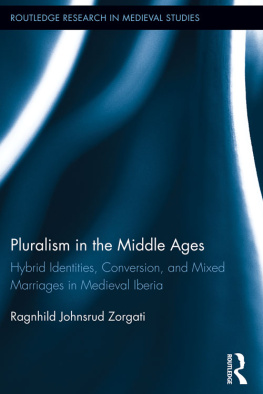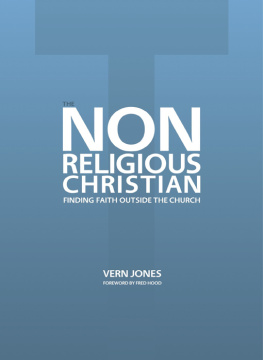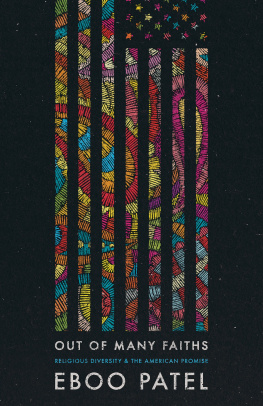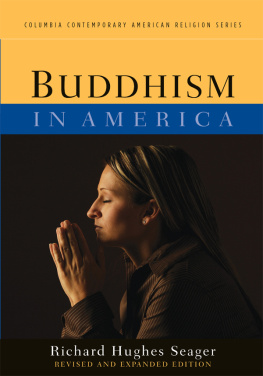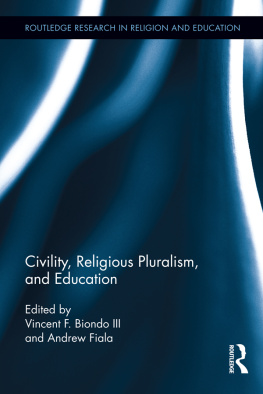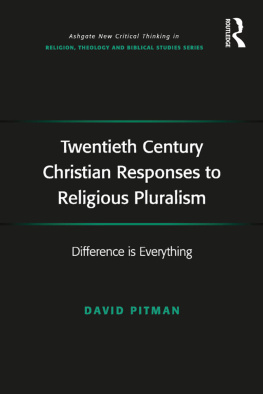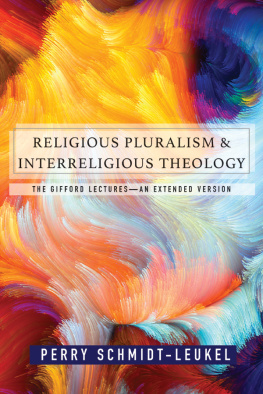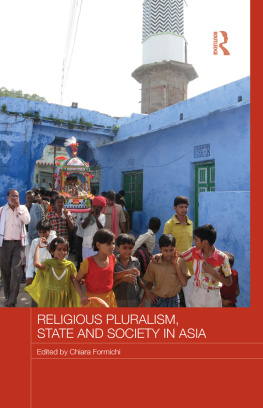
This book is dedicated to my mother, Dorothy Eck,
and to the memory
of my father, Hugo Eck,
and my brother, Laurence Eck
Preface 2003
In the ten years since the publication of Encountering God in 1993, issues of religious difference have been front-page news all over the world. People of every religious tradition have exhibited the wares of religious chauvinism and violence, using religious language and symbolism to stake out political territory. Others in those same traditions have opposed the belligerence of their co-religionists and have put the energies of their faith to the transformative work of bridgebuilding and peace-making.
In the past decade we have also begun to talk about globalizationthe transnational currents of a shrinking world. With all its positive and negative connotations, globalization has opened our eyes to the ways in which our economies, our political boundaries, our communication systems, and our conflicts are inextricably linked. The recognition of our deep interdependence should go hand in hand with globalization. Often, however, it does not, and globalization then leads to what is effectively a new regime of colonial domination. The expansion of terrorism and the attacks of September 11, 2001, make clear the vulnerability, even of the powerful, in a world in which boundaries are dotted lines, at most.
Religious communities are participants in the globalization of world systems. Even as ethnic, cultural, and religious identity movements resist the homogenizing powers of globalization, they employ its systems of communications and technology. At one end of the spectrum, our global systems create channels of interfaith dialogue across cultures and religions; they create networks of environmental activists and new coalitions of religious leaders. At the other extreme, these same systems distribute the energies of a new tribalism and religious extremism. Are we now at the beginning of an era that will see the bridging of civilizations, indeed a creative dialogue of civilizations? Or will the decades ahead be marked by rigid and rivalrous adherence to religious, cultural, and national identities? The future of the blue planet so poignantly visible from space depends very much on the choices we make as all of us envision the future. Developing a refined awareness of our interdependence is a challenging intellectual and spiritual task. The critical question is whether we humans can come to understand and perhaps even appreciate our religious differences, while recognizing that we are deeply related and dependent upon one another for our survival.
Broad demographic changes are also part of our new global reality. Massive movements of refugees and economic migrants have created a new geo-religious and geo-cultural reality. In the United States, the trends in immigration since 1965 have brought the religious traditions of the world to our doorstep and have made American religious life more complex. Newcomers have brought with them not only their luggage and economic aspirations, but their Qurans and Bhagavad Gitas, their images of Krishna, the Bodhisattva Kuan Yin, and the Virgin of Guadalupe. Some come fleeing religious fanaticism and cherish the freedom not to be religious at all. In short, the world of east is east and west is west has been superceded by a new demographic reality. It is precisely the interpenetration and proximity of great civilizations and cultureseast and west, north and souththat will be the hallmark of the twenty-first century. Each part of the world is marbled with the colors and currents of the whole. We are majorities here or minorities there, but we live and worship in each others presence.
My own work, in the course of this past decade, has taken me on a return journey from India to America, from Banaras back to Boston, investigating with my students and colleagues the dimensions and challenges of these profound changes in Americas religious landscape. The Pluralism Project (www.pluralism.org), which I launched in 1991, has produced an educational multimedia CD-ROM , On Common Ground: World Religions in America, and I have written another book, A New Religious America: How a Christian Country Has Become the Worlds Most Religiously Diverse Nation. That book explores the question of religious difference in the context of Americas civic life.
Encountering God deals more with religious difference in a theological perspective, bearing in mind that our theological questions are not quite the same as our civic questions. Our civic question is how we as citizens can build creative multireligious societies in which our differences can increasingly become the very source of our strength and creativity. Our theological question is how we as Christians or Jews or Muslims will think about our own faith anew in relation to the faith of our neighbors. It is true, however, that our increasing engagement with one another in civil society may well provide the context for new and transformative theological thinking.
When Encountering God was first published, the Parliament of the Worlds Religions was convening in Chicago. It was a centennial observance of the 1893 Worlds Parliament of Religions, which I discuss in . By 1993, a gathering of religious leaders from around the world was not so extraordinary. But what was extraordinary was the public display of Americas own religious diversity. In 1893, thousands of invitations were sent out by the Chicago coordinating committee, which was largely Protestant Christian. By 1993, the tables were turned and the guests were now the hosts. Chicagos religious communities formed fourteen host-committees to invite and sponsor their co-religionists. The Hindu host-committee included planners from two enormous new Chicago temples. The Buddhist Council of the Midwest brought together Asian-American Buddhists from across the spectrum of Asiaimmigrants from Thailand, Cambodia, Vietnam, and Koreaas well as first-generation Euro-American Buddhists. The Muslim community of greater Chicago included dozens of mosques and nearly half a million Muslims. Jain participants had built a new temple in Bartlett, Sikhs had constructed a modern gurdwara in Palatine, and Zoroastrians had a new center in Hinsdaleall in suburban Chicago.
How will we understand and interpret one another as people of faith, living virtually next door, working together in the workplace, sending our children to the same school, involved in the concerns of the same neighborhood? Equally important, how will we understand ourselves as people of faith in a world in which it is simply impossible to deny the vibrancy of communities of faith different from our own? Here in America, our encounter with one another is no longer through ideas, texts, and media representation alone, but through the immediacy of coffee-shop conversations, dorm-room discussions, and civic coalitions against homelessness. Our fears and suspicions are no longer abstract either. People of every faith experience the erosion of trust in their neighbors with each volley of religious violence and with each incident of racial or religious prejudice.
The questions raised in this book are likely to be with us for some time, as people of different religious traditions struggle to achieve a respectful and appreciative understanding of one another. What is it about religious difference that causes so much trouble? Must our differences be so divisive, or can they be steered toward creative relationships, rather than competitive rivalries? Can our encounter with people of other faiths enrich our understanding and experience of the one we call God?




